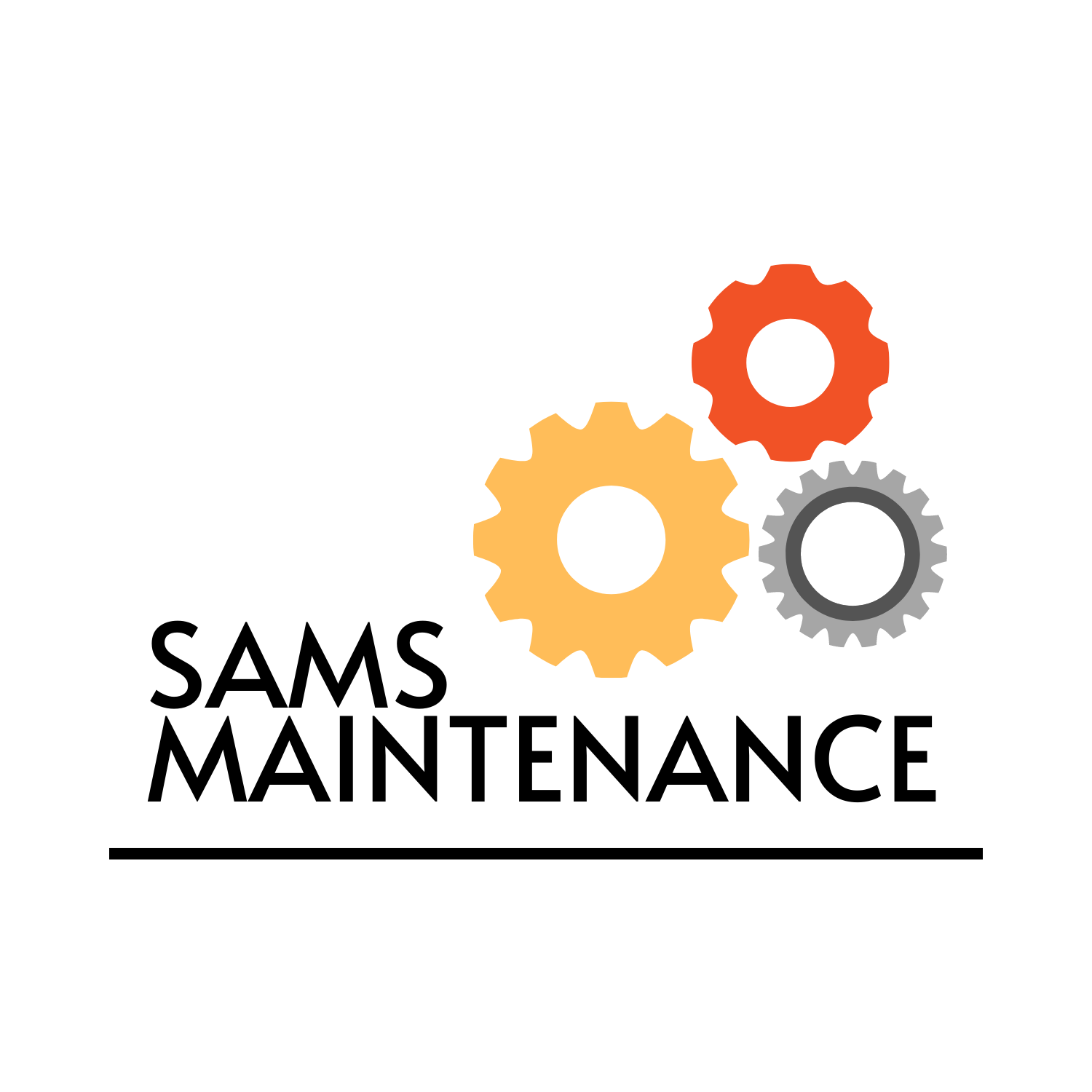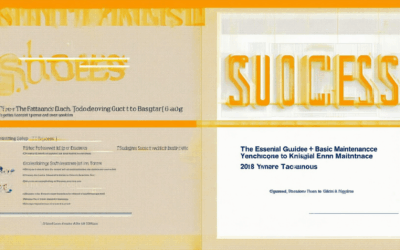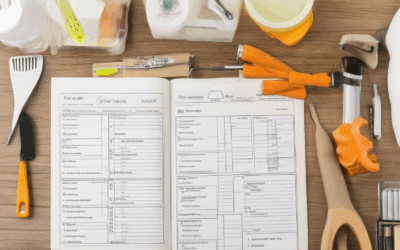Routine repair projects are the backbone of maintaining operational efficiency across industries, yet many organizations struggle with managing them effectively. From preventing costly breakdowns to extending equipment lifespan, the importance of streamlined repair processes cannot be overstated. However, with competing priorities and limited resources, achieving optimal performance in routine repair projects often becomes a challenge. Whether you’re overseeing manufacturing plants, healthcare facilities, or transportation systems, inefficiencies in routine repair projects can lead to significant downtime, safety hazards, and increased costs. In this article, we’ll explore proven strategies and tools designed to ignite efficiency and help you master the art of streamlining routine repair projects.
Key Takeaways
– Streamline Operations: Implement thorough planning and organization to prevent issues from escalating and ensure timely resolutions.
– Enhance Communication: Use centralized systems and maintain clear interactions with all stakeholders to reduce delays and misunderstandings.
– Optimize Resources: Keep spare parts inventoried, budget wisely, and build a reliable network of vendors for efficient project execution.
– Prioritize Effectively: Categorize repairs by urgency and impact, addressing critical issues first to minimize disruptions and ensure tenant satisfaction.
– Stay Organized: Utilize project management tools and assign responsibilities clearly to keep workflows smooth and on track.
– Foster Collaboration: Work closely with cross-functional teams and encourage tenant feedback to address issues promptly and improve outcomes.
– Continuous Improvement: Regularly review past projects, stay updated on best practices, and invest in ongoing training to enhance efficiency.
– Leverage Expertise: When needed, hire professionals or consult trusted resources like Sams Maintenance to achieve optimal results.
By integrating these strategies, you can elevate your approach to managing routine repair projects, boosting efficiency, and delivering high-quality outcomes.

Effective Management of Routine Repair Projects
Managing routine repair projects requires a combination of organization, preparation, and attention to detail. Here’s a structured approach to ensure your projects run smoothly:
- Plan Thoroughly
- Create a detailed project plan outlining objectives, timeline, and key deliverables.
- Identify potential challenges and develop contingency plans.
- Establish clear roles and responsibilities for team members.
- Organize Resources
- Gather all necessary tools, materials, and equipment upfront.
- Set up a centralized location for documentation and blueprints.
- Implement a system for tracking inventory and tool usage.
- Streamline Communication
- Hold regular meetings to review progress and address issues.
- Use project management software for real-time updates and task assignments.
- Distribute project updates to stakeholders via email or a shared platform.
- Emphasize Safety
- Conduct safety training for all personnel involved.
- Inspect the work area for hazards before starting.
- Maintain a first aid kit and have emergency procedures in place.
- Monitor Progress Closely
- Regularly inspect completed work to ensure quality standards.
- Track progress against the timeline and adjust plans as needed.
- Address delays promptly and communicate any impact on the project schedule.
- Promote Quality Control
- Use checklists to ensure all critical steps are completed correctly.
- Perform spot checks on the workmanship and materials used.
- Document any issues identified and take corrective actions.
- Stay Informed
- Keep up with industry trends and new technologies.
- Review recent project reports and case studies for insights.
- Engage with peers through professional networks and forums.
- Navigate Legal Requirements
- Verify that all required permits and licenses are obtained.
- Ensure compliance with local building codes and regulations.
- Maintain proper documentation for insurance claims and record-keeping.
- Celebrate Milestones
- Recognize individual and team achievements publicly.
- Mark significant completion points to boost morale.
- Use milestone celebrations as opportunities for feedback and continuous improvement.
What Are the Best Ways to Manage Routine Repair Projects?
We understand the importance of efficiently managing routine repair projects to ensure your home remains in optimal condition. Here are some proven strategies to help you get started:
- Scheduling Regular Check-Ups : Establish a routine maintenance schedule to catch potential issues early. This includes checking systems like HVAC, plumbing, and electrical components. Proper planning ensures minor problems don’t escalate into major repairs.
- Prioritizing Tasks : Categorize repairs based on urgency and impact. Address critical issues first to minimize disruption. Use tools like this checklist to stay organized.
- Effective Communication : Maintain clear records of all repairs and communicate regularly with stakeholders. Transparency builds trust and helps prevent misunderstandings. Document everything digitally for easy access.
- Budgeting and Cost Management : Set aside funds for unexpected repairs. Track expenses and compare prices before hiring contractors. Use resources like this guide to manage your budget effectively.
- Focusing on Safety : Ensure all repairs are conducted safely. Use high-quality materials and follow manufacturer guidelines. Protect your property and ensure a safe working environment at all times.
By implementing these strategies, you can manage routine repair projects more efficiently and keep your home in great shape. Remember to always prioritize quality and safety to ensure long-lasting results.

Top Tips for Efficiently Managing Routine Repair Projects
1. Prepare Thoroughly Before Starting
- Create a detailed checklist of all necessary tools, materials, and steps.
- Gather all required documents, such as manuals or warranties.
- Inspect the area beforehand to identify potential issues.
2. Organize Tools and Materials
- Store tools in labeled containers or cabinets for easy access.
- Keep frequently used items within reach.
- Use bins or trays to sort small parts and avoid loss or confusion.
3. Use the Right Tools for the Job
- Invest in high-quality tools designed for the specific task.
- Avoid using tools that are too large or heavy for the job.
- Keep your workspace clean to prevent tool misplacement.
4. Schedule and Prioritize Tasks
- Break the project into manageable, sequential tasks.
- Assign a specific time slot for each task to stay on track.
- Tackle the most critical tasks first to minimize delays.
5. Maintain Backup Supplies
- Keep spare parts and materials on hand for quick replacement.
- Stock up on common items like screws, nuts, and bolts.
- Plan for unexpected issues by having extra supplies ready.
6. Communicate Effectively
- Inform all stakeholders about the project timeline.
- Use visual aids or checklists to align expectations.
- Address questions or concerns promptly to avoid delays.
7. Document Everything
- Take photos or videos of the project before and during repairs.
- Record all changes made to the property or system.
- Keep a log of materials used and time spent on each task.
8. Stay Organized Throughout the Project
- Use a central location to store drawings and blueprints.
- Label all temporary fixtures to avoid confusion.
- Clean up as you go to maintain a neat workspace.
9. Regularly Check Progress
- Review completed work against the initial plan.
- Inspect for hidden issues that may arise.
- Adjust timelines or resources as needed based on progress.
10. Prevent Future Issues with Regular Maintenance
- Perform routine inspections to catch small problems early.
- Replace worn-out components before they fail.
- Follow manufacturer guidelines for maintenance schedules.
11. Know When to Seek Help
- Don’t hesitate to consult professionals for complex repairs.
- Use online resources or forums for troubleshooting tips.
- Join local DIY groups to gain insights and advice from experienced members.
- Home Depot – Offers a wide range of tools and supplies.
- Lowe’s – Provides helpful DIY guides and tools.
- Ace Hardware – Known for its extensive tool selection.
- SamsMaintenance.com – Your trusted source for home maintenance tips and resources.

Effective Strategies for Managing Routine Repair Projects
Managing routine repair projects requires careful planning, organization, and execution to ensure everything runs smoothly. Here are some proven strategies to help you succeed:
- Plan Thoroughly and Prepare
- Create a detailed maintenance schedule aligned with the property’s usage patterns.
- Conduct regular inspections to identify potential issues before they escalate.
- Develop a checklist for each type of repair to ensure nothing is missed.
- Implement Effective Communication Systems
- Use a centralized system to track repair requests, assignments, and completion status.
- Communicate clearly with all stakeholders, including tenants, property managers, and vendors.
- Document all interactions and decisions for transparency and accountability.
- Manage Resources Wisely
- Keep an inventory of spare parts and materials needed for common repairs.
- Budget carefully and allocate funds based on the frequency and complexity of repairs.
- Build a network of reliable vendors and contractors who can be called upon as needed.
- Prioritize Repairs Effectively
- Categorize repairs based on urgency and impact on tenant comfort or property value.
- Use a priority matrix to determine the severity and frequency of each repair type.
- Address critical issues first to minimize disruption and prevent safety hazards.
- Stay Organized and Efficient
- Use project management tools or software to track progress and deadlines.
- Assign responsibilities clearly to team members or contractors.
- Regularly review and update maintenance plans to adapt to changing needs.
- Foster Collaboration and Feedback
- Work closely with cross-functional teams to ensure seamless coordination.
- Encourage tenants or occupants to report issues promptly through a designated system.
- Hold regular meetings to discuss project status and gather feedback.
- Continuous Improvement
- Learn from past projects to identify areas for improvement.
- Stay updated on the latest tools, techniques, and best practices in maintenance.
- Invest in ongoing training for yourself and your team to enhance skills.
By implementing these strategies, you can manage routine repair projects more effectively, reducing downtime, minimizing costs, and ensuring the property remains in excellent condition.
How to Streamline Routine Repair Projects to Save Time
Efficiently managing routine repair projects can significantly save time and reduce stress. Here are some proven strategies to streamline your process:
- Organize Your Tools and Materials: Keep your tools and materials stored in a well-organized manner. Use a tool chest or drawer system to quickly access what you need. Label containers to ensure everything is easily found.
- Schedule Your Repairs: Plan your repair projects on a weekly basis. Prioritize smaller tasks during your free time and tackle larger projects when you have more availability. This helps prevent last-minute rush jobs.
- Prepare Thoroughly Before Starting: Create a checklist of everything needed for each repair. Gather all materials and tools beforehand to minimize downtime. Double-check that you have all the necessary parts and tools before beginning work.
- Invest in Multi-Functional Tools: Choose tools that can handle multiple tasks. For example, a cordless drill can be used for drilling, driving screws, and even removing nuts. This reduces the need to switch between different tools.
- Hire Professionals for Complex Jobs: If a repair is too complicated or time-consuming for your skill level, consider hiring a professional. A skilled technician can often complete the job faster and more efficiently, especially for tasks requiring specialized knowledge or equipment.
- Stay Informed and UpToDate: Regularly consult reliable resources like Sams Maintenance for tips and best practices. Their guides and articles can help you avoid common mistakes and find efficient solutions.
- Review Past Projects: After completing a repair project, take some time to review what worked well and what could have been improved. Identify bottlenecks and areas where you lost time. Use this feedback to refine your approach for future projects.
By implementing these strategies, you can save significant time while maintaining the quality of your repairs. Remember, preparation, organization, and knowing when to seek help are key to streamlining your routine repair projects.

Key Steps to Effectively Manage Routine Repair Projects
Managing routine repair projects requires careful planning, organization, and execution. Here’s a structured approach to ensure success:
- Plan Thoroughly
- Define clear objectives and scope of the project.
- Create a detailed checklist of tasks and materials needed.
- Establish a realistic timeline and budget.
- Identify potential risks and plan mitigations.
- Prioritize Tasks
- Categorize tasks based on urgency and impact.
- Use visual tools like task boards or mind maps to organize work.
- Delegate responsibilities to team members or contractors.
- Create a Timeline
- Break down the project into smaller, manageable phases.
- Set milestones and deadlines for each phase.
- Use project management tools like Gantt charts or calendars.
- Monitor Progress
- Regularly check the status of each task and subtask.
- Conduct regular inspections or walkthroughs of the project site.
- Document progress and update stakeholders accordingly.
- Adjust as Needed
- Be flexible to accommodate unexpected challenges or delays.
- Communicate changes in plans to all parties involved.
- Reassess priorities if necessary to stay on track.
- Document Everything
- Keep detailed records of all decisions, communications, and actions.
- Use digital tools like spreadsheets or cloud-based document management systems.
- Store all relevant files and documents securely.
- Review After Completion
- Hold a final review meeting to evaluate the project outcome.
- Identify lessons learned and areas for improvement.
- Document feedback and successes for future reference.
- Stay Organized
- Use project management software or apps to track progress.
- Maintain a centralized location for all project-related information.
- Schedule regular updates with stakeholders to keep everyone informed.
- Collaborate Effectively
- Maintain open and frequent communication channels.
- Involving stakeholders early in the planning process ensures alignment.
- Use collaborative tools like shared calendars or task management platforms.
By following these steps, you can efficiently manage routine repair projects and deliver results that meet expectations. Tools like those offered by Sams Maintenance can further enhance your project management capabilities.




0 Comments